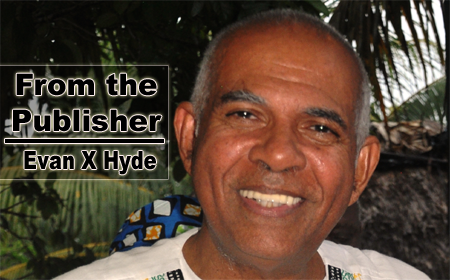There was a very bad mistake in my Tuesday column last week, the Tuesday newspaper being printed only online. I caught the mistake when I read over the column when it was reproduced in our Friday hard copy edition.
For decades, from the 1980s, I had a secretary by the name of Odessa Robinson Smith who typed all my material. It ended up that she was the only one who could read my terrible handwriting. I think Odessa migrated to New York after the coronavirus pandemic began, so I have been doing my own typing since then, and I hate it.
In any case, on Tuesday I typed that “hundreds” of Japanese had been killed by the Hiroshima and Nagasaki atomic bombs in August of 1945. It should have been “hundreds of thousands” instead of hundreds — hundreds of thousands in each of the cities.
Anyway, my column today, apart from seeking to correct that Tuesday error, is intended to flesh out an aspect, a very important aspect, of the John Kennedy assassination in 1963 which I had not mentioned in my Friday column.
When Miguel Ydigoras Fuentes, an army general, was elected President of Guatemala in 1958, I was just a child, maybe eleven years old. Fuentes was very aggressive where the Guatemalan claim to British Honduras was concerned, and there was great concern in the majority black Belize City, where many people felt the ruling People’s United Party (PUP), which Rt. Hon. George Price had taken over from Hon. Leigh Richardson and Hon. Philip Goldson in 1956, was not hostile enough to said claim.
The United States administration of President Dwight D. Eisenhower, had cut a deal with the Fuentes administration to have Cuban exiles trained on a coffee estate in Guatemala for an invasion of Cuba, which Fidel Castro had taken over by revolution in January of 1959.
John Kennedy found this plan for a so-called Bay of Pigs invasion of Cuba by Cuban exiles on his desk when he assumed the presidency of the United States in January of 1961.
Fuentes later claimed that in return for his allowing Guatemala to be used to train the Cuban exiles, the U.S. government had promised him support for Guatemala’s claim to the British colony. There is no doubt that he was very aggressive where the Belize claim was concerned, and Philip Goldson, who had entered into a coalition with Herbert Fuller’s National Independence Party (NIP) in 1958, was using his newspaper, THE BELIZE BILLBOARD, the leading newspaper in British Honduras, to counter Fuentes’ rhetoric and activities, such as trying to cross the Benque Viejo border, and boost the morale of alarmed Belizeans.
Anyway, when the Cuban exiles finally invaded Cuba in April of 1961, there was a critical moment in the invasion when the Cuban exiles needed air cover from the U.S. government. One assumes it was the American “deep state” which had come up with the original invasion plan during the Eisenhower administration. When that “deep state,” and the Cuban exiles, called for the air cover in desperation, Kennedy refused.
The Cuban exiles were then overwhelmed by the Cuban defenders, led by Fidel himself, and about 1300 of them ended up prisoners in Cuban jails. Castro later exchanged them for American farm tractors.
Figuring out why President Kennedy refused the air cover is not for me to try to do. What we know is that there were Cuban exiles and members of the American deep state who became very, very angry with Kennedy and his decision. Students of the Kennedy assassination believe that Kennedy’s decision to refuse to provide the Bay of Pigs air cover contributed substantially to the assassination conspiracy against him.
It’s interesting to note that Fuentes’ decision to host the training of the Cuban exiles in Guatemala, sparked a nationalist rebellion in the Guatemalan army in late 1960, led by Marco Antonio Yon Sosa and Luis Turcios Lima. Many scholars view that army rebellion as the beginning of the Guatemalan civil war, which lasted for thirty-six years.
That civil war may have contributed to Great Britain’s being able to push through political independence for Belize, because the Guatemalan civil war was very bloody and out of control in 1981, and the rest of the world looked favorably on Belize’s quest for self-rule.
Well now, here we Belizeans are presently confronted by this International Court of Justice (ICJ) arbitration. My personal opinion is that we are in the hands of the Americans. You will say, of course, what do I mean by that. Well, can you deny that we were in the hands of the British until 1981?
In closing, I would like to say that there are some Belizeans here who focus exclusively on the activities and dangers of the Mexican cartels. These Belizeans never mention the American Mafia, but there is such a thing as cross-border crime.
I have a teacher named Clinton Canul Luna. You know that. But I also have a white American teacher named Jeff. He knows a lot more than I do, so I spend time listening to him.
Power to the people.

